The mission of the Bridge to a Cure Foundation is to increase the pace and success of childhood cancer research. In order to do that, we need to remove barriers to finding cures and effective treatments. The clinical trial process is one such barrier. Without clinical trials, there are no new drugs. In this blog we examine:
- Why we need childhood cancer clinical trials.
- Proof that today’s clinical trials are a debacle.
- The reasons why the current process is failing.
Why we need childhood cancer clinical trials
- To ensure that the drug(s) are effective. “Children and adolescents are not small adults, and their bodies’ physiology and chemistry react very differently to illness and disease. Thus, pediatric clinical trials are critical to developing treatments and cures for childhood disease and illnesses.”
- To identify harmful side effects and “provide reliable evidence of treatment effects by rigorous controlled testing of interventions on human subjects.“
Proof that today’s clinical trials are a debacle
- In the last 25 years, the FDA has received only 30 applications for new drugs for use in pediatric-specific oncology.
- Few drugs have been developed — Since 1980, fewer than 10 drugs have been developed for use in children with cancer.
- The few drugs that have been developed have not delivered a cure and have been appallingly harmful and ineffective. As a result:
- Cancer remains the number one cause of death by disease among children.
- There has been no change to the survival rate for children with brain and other nervous system cancers for the past 20 years.
- Even with survival defined as a child living for a mere five years, only 75% of childhood cancer patients meet that yardstick.
- More than 95% of childhood cancer survivors will have a significant health-related issue by the time they are 45 years of age.
- Many clinical trials for children are abandoned and their results never published.
- Few clinical trials are conducted in childhood patients compared to the number of industry-supported clinical drug trials conducted in adults, a 2012 study found.
Why the current childhood clinical trial process is failing
- The criteria for approval is insufficiently vigorous — Children are considered survivors if they live a meager five years. If a child surviving five years is a goal researchers can celebrate and be rewarded for, then we should not be surprised that that’s what our solutions deliver. The five-year measurement fails to acknowledge the child’s horrific suffering, the emotional strain on parents and siblings, or the financial impact on the family.
- Lack of participation — One study identified 30 potential barriers to participation in childhood clinical trials including a relatively small population of available participants; high cost and lack of incentives for pharmaceutical companies to perform drug trials; potential legal risk to the pharmaceutical sponsor; ethical concerns regarding participation of children in trials; and a lack of adequately trained pediatric investigators.
- Lack of Funding — Pharmaceutical companies won’t invest. “One significant challenge in developing drugs for children is the perspective that pediatric medicines do not provide industry with similar financial rewards as adult medicines,” said Benjamin Ortiz, MD, who formerly served as Medical Officer in the Office of Pediatric Therapeutics at the FDA.
- The pharmaceutical industry “may have been reluctant to study medicines in children” for several reasons, another NCBI study says in an obvious understatement. “The market for the sale of many drugs for children is smaller than that for adults, and therefore investment in childhood drug testing might be less attractive financially. Other reasons cited in this report include ethical difficulties, problems with blood sampling, and difficulties in recruiting sufficient numbers of children.”
- Pharmaceutical companies won’t provide drugs — “Access to drugs and the ability to explore them are the biggest barriers to changing standard of care for pediatric patients,” says childhood cancer expert Patrick Brown, Associate Professor of Oncology and director of the Pediatric Leukemia Program at John’s Hopkins. “We can’t mass-produce drugs, so we usually rely on drug companies to provide drugs for clinical trials,” says Brown. “The much smaller number of patients with childhood cancers compared to adult cancers and the risk of something going wrong with a drug being tested in children can make pharmaceutical companies reluctant to provide drugs.”
- The current clinical trials process favors research into diseases that affect adults over those that afflict children — There are over 300,000 clinical trials available today worldwide, of which there are only 26 childhood clinical trials in the U.S. (https://pediatrictrials.org).
- Ethical concerns — “Pediatric trials are more challenging to conduct than trials in adults because of the paucity of funding, uniqueness of children, and particular ethical concerns,” says a study from the National Center for Biotechnology Information (NCBI), which is under the National Institutes of Health.
We need a new national strategy and commitment to improve the clinical trials process for childhood cancer drugs and therapies. In part 2 of this blog, we will explore what needs to be done.
To read our prior posts providing solutions to improving our approach childhood cancer research, visit Bridge to a Cure.
The Bridge to a Cure Foundation is the lead advocate for modernizing our approach to childhood cancer, with a priority on building a childhood cancer database to speed up the search for cures. We have met and gained the support of over 120 institutions and practitioners, including the former NCI Director Ned Sharpless, who has become a forceful proponent and driver of this initiative in Washington. To learn more about the foundation and add your support, visit Bridge to a Cure.






